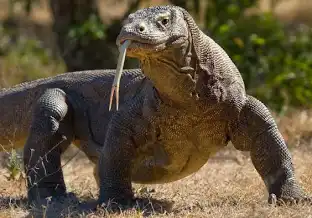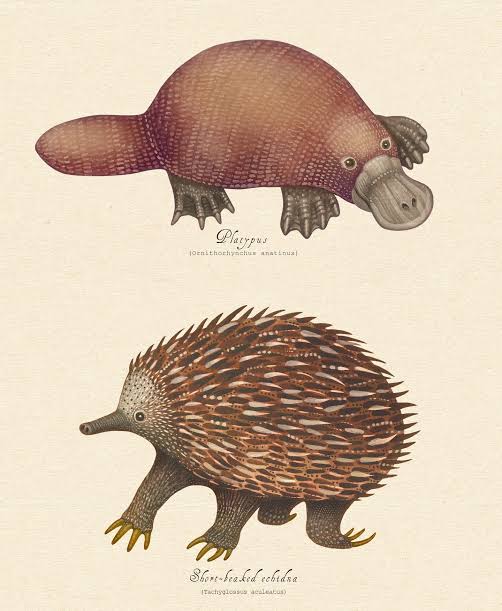 The Komodo dragon (Varanus komodoensis) holds the title of the largest living lizard on Earth. This formidable reptile is not only remarkable for its sheer size but also for its ancient lineage, unique biology, and apex predator status. Native to a handful of Indonesian islands, Komodo dragons inspire awe and intrigue, embodying the raw, untamed power of nature.
The Komodo dragon (Varanus komodoensis) holds the title of the largest living lizard on Earth. This formidable reptile is not only remarkable for its sheer size but also for its ancient lineage, unique biology, and apex predator status. Native to a handful of Indonesian islands, Komodo dragons inspire awe and intrigue, embodying the raw, untamed power of nature.
Komodo dragons belong to the family Varanidae, a group that includes all monitor lizards. The genus Varanus includes about 80 species found throughout Africa, Asia, and Oceania. Komodo dragons are thought to have evolved around 4 million years ago, although their giant size likely developed later due to island gigantism, a phenomenon where species isolated on islands evolve larger sizes in the absence of predators and competition.
Fossil evidence suggests that large monitor lizards were once widespread, and the Komodo dragon is one of the last remnants of this evolutionary legacy. They are often referred to as “living fossils” due to their primitive characteristics and ancient ancestry.
Komodo dragons are massive reptiles, with adult males typically measuring 2.5 to 3 meters (8 to 10 feet) in length and weighing 70 to 90 kilograms (150 to 200 pounds). Females are generally smaller, usually around 1.8 meters (6 feet) long. The largest verified Komodo dragon ever recorded measured over 3.13 meters (10.3 feet) and weighed 166 kilograms (366 pounds), though this included undigested food in its stomach.
Key Physical Traits:
•Robust build with strong, muscular limbs.
•Long, powerful tail, used for balance and as a weapon.
•Thick, scaly skin reinforced by bony deposits called osteoderms.
•Forked tongue used for detecting scents, similar to snakes.
•Sharp, serrated teeth, ideal for ripping flesh.
Komodo dragons are endemic to Indonesia, specifically the islands of:
•Komodo
•Rinca
•Gili Motang
•Padar
•Flores (less commonly)
These lizards prefer hot, dry climates and are usually found in savannahs, tropical forests, and dry riverbeds. They are excellent swimmers and can move from island to island, which helps explain their presence across multiple islands.
Komodo dragons are solitary carnivores and spend most of their time hunting or scavenging. They are diurnal, meaning they are active during the day, and they often bask in the sun to regulate their body temperature.
Komodo dragons are opportunistic feeders with a diet that includes:
•Deer
•Wild boar
•Water buffalo
•Smaller dragons
•Carrion (dead animals)
•Occasionally humans (rarely)
They are capable of consuming up to 80% of their body weight in a single meal, tearing off large chunks of meat with their teeth and swallowing them whole.
For many years, it was believed that Komodo dragons relied on bacteria in their saliva to infect prey. However, recent studies have shown that they possess venom glands that produce anticoagulants and toxins capable of inducing shock, lowering blood pressure, and preventing clotting. When they bite prey, the venom rapidly weakens and incapacitates it, even if the prey initially escapes.
Komodo dragons also use ambush tactics, hiding in the grass and launching surprise attacks with a powerful bite and strong limbs.
Komodo dragons have a complex reproductive system, with females laying up to 30 eggs in a single clutch, often in abandoned megapode bird nests or dug-out holes. The incubation period lasts around 7 to 8 months.
Remarkably, Komodo dragons can reproduce through parthenogenesis — a form of asexual reproduction where females produce offspring without male fertilization. This adaptation ensures survival even when populations are small or isolated.
Juveniles are vulnerable and often climb trees to avoid being eaten by adults. They feed on insects, small lizards, and birds until they are large enough to descend and compete for bigger prey.
Komodo dragons can live up to 30 years in the wild.
The Komodo dragon is currently listed as “Endangered” on the IUCN Red List due to:
•Habitat loss
• Climate change (rising temperatures and sea levels threaten their limited island habitats)
•Human encroachment
•Poaching and tourism-related disturbance
The Indonesian government, along with conservation organizations like the Komodo National Park (established in 1980), has taken significant steps to protect the species, including restricted access to key habitats, anti-poaching laws, and captive breeding programs.
The Komodo dragon holds a significant place in local folklore and has fascinated biologists and zoologists around the world. They represent a crucial piece of Earth’s biodiversity and offer insights into:
•Island biogeography
•Predator-prey dynamics
•Evolutionary biology
•Venom research and medical applications
Their presence also fuels eco-tourism in Indonesia, generating revenue for conservation and raising global awareness.
The Komodo dragon is far more than a biological curiosity — it is a powerful symbol of survival, evolution, and the delicate balance of ecosystems. As the largest living lizard on the planet, it reminds us of nature’s grandeur and the importance of protecting our natural world. Preserving the Komodo dragon ensures that future generations can continue to learn from and be inspired by this extraordinary reptile.








